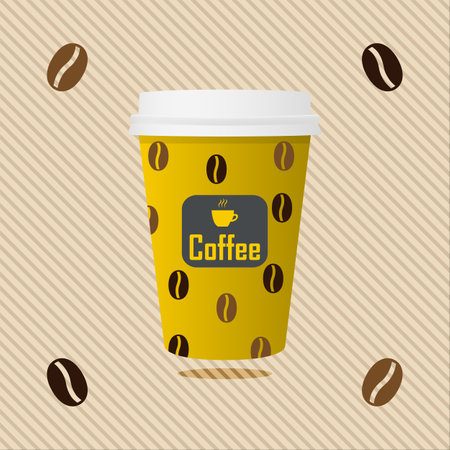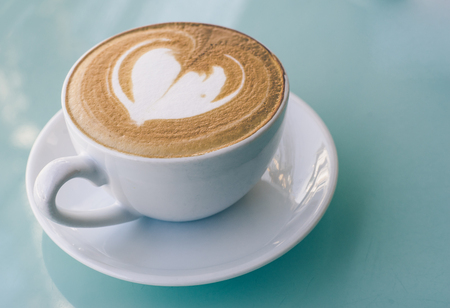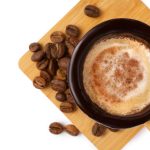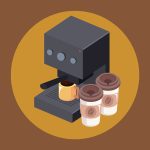1. Understanding the Espresso Basics
If youre just starting your coffee journey, youve probably heard the word “espresso” tossed around a lot. But what exactly is espresso, and why does it matter so much in the world of coffee? Lets break it down.
What Makes Espresso Unique?
Espresso isnt just strong coffee — its a whole different brewing method. What sets it apart is how its made: by forcing hot water through finely-ground coffee under high pressure, usually around 9 bars. This process extracts intense flavor, rich body, and that signature golden layer on top called crema.
The Science Behind Pressure Extraction
When hot water is pushed through the coffee grounds at high pressure, it emulsifies the oils and captures the most flavorful compounds quickly. This results in a concentrated shot of coffee with bold taste and a velvety texture. Heres a quick look at how espresso compares to regular drip coffee:
| Feature | Espresso | Drip Coffee |
|---|---|---|
| Brewing Method | Pressure extraction (9 bars) | Gravity-based dripping |
| Coffee Grind Size | Fine | Medium-coarse |
| Brew Time | 25–30 seconds | 4–6 minutes |
| Caffeine Content (per oz) | ~63 mg/oz | ~12–16 mg/oz |
| Taste Profile | Bold, rich, intense | Milder, smoother |
Why Espresso Is the Base of So Many Drinks
If youve ever ordered a latte, cappuccino, macchiato, or flat white, guess what? Theyre all built on a foundation of espresso. Because of its strength and depth of flavor, espresso holds up beautifully when combined with milk, foam, or syrups — making it incredibly versatile for coffeehouse favorites.
Popular Espresso-Based Drinks:
- Latte: Espresso + steamed milk + light foam
- Cappuccino: Equal parts espresso, steamed milk & foam
- Americano: Espresso + hot water (mimics drip coffee)
- Macchiato: Espresso “marked” with a dollop of foam or milk
- Flat White: Espresso + microfoam (smooth textured milk)
Diving into espresso basics sets the stage for understanding crema — that luscious golden layer that sits on top of a perfect shot. Its more than just good looks; crema tells you a lot about your espressos quality. In the next section, well explore what crema really is and why its such a big deal for aspiring espresso experts.
2. Choosing Your Equipment
If youre serious about mastering the art of espresso and pulling that perfect shot with a rich, golden crema, it all starts with having the right gear. Whether youre brand new to coffee or looking to upgrade your setup, choosing the right equipment makes all the difference. Lets break down what you need—no fluff, just the essentials.
Espresso Machine: The Heart of Your Setup
There are tons of machines out there, but they generally fall into three main categories. Heres a quick guide:
| Type | Best For | Pros | Cons |
|---|---|---|---|
| Semi-Automatic | Beginners to Intermediate Users | Good control, affordable options, widely available | Learning curve for dialing in shots |
| Automatic | Busy users who want consistency | Push-button ease, consistent results | Less control over shot quality |
| Manual (Lever) | Coffee geeks and purists | Total control, satisfying process | Takes practice, more expensive |
Coffee Grinder: Don’t Skip This Step!
A great grinder is just as important as your espresso machine. You’ll want a burr grinder—not a blade one—for consistent particle size, which is key for proper extraction and crema. Look for these features:
- Dose Control: Helps with consistency from shot to shot.
- Grind Size Adjustability: Essential for dialing in your espresso.
- Burr Type: Conical burrs are quieter and cheaper; flat burrs offer more precision.
Recommended Grinders by Level:
| User Level | Grinder Example | Price Range (USD) |
|---|---|---|
| Beginner | Baratza Encore ESP / Breville Smart Grinder Pro | $150–$250 |
| Intermediate | Eureka Mignon / Baratza Sette 270 | $300–$500 |
| Advanced | Niche Zero / Mazzer Mini / DF64P | $600+ |
The Tamper: Small Tool, Big Impact
Tamping compresses your coffee grounds evenly into the portafilter basket. A good tamper helps ensure uniform pressure, which means better extraction and crema. Look for one that fits your machine’s portafilter basket snugly—usually 58mm for most machines.
Tamper Tips:
- Flat vs Convex: Flat tampers are common and reliable; convex can help reduce edge channeling.
- Material Matters: Stainless steel base is ideal for durability.
- Ergonomics: Choose one that feels comfortable in your hand.
The Scale: Precision is Key
You wouldn’t guess how much flour goes into cookies—so don’t guess your coffee dose either. A digital scale helps you measure both your coffee input and espresso output down to the gram. This is crucial when dialing in your shots and maintaining consistency.
What to Look For in a Coffee Scale:
- Tenth-of-a-gram accuracy (0.1g)
- Brew timer built-in (optional but useful)
- Compact size to fit on drip tray under cup or portafilter
Your Budget-Friendly Starter Pack vs Pro Setup:
| Starter Setup (~$500) | Pro-Level Setup ($1000+) | |
|---|---|---|
| Machine | Breville Bambino Plus / Gaggia Classic Pro | Lelit Bianca / Rocket Appartamento / Profitec Pro 700 |
| Grinder | Baratza Encore ESP / Breville Smart Grinder Pro | Niche Zero / Eureka Specialita / DF64P |
| Tamper & Tools | Tamper + Distributor Combo (~$30) | Puck leveler, calibrated tamper (~$100+ total) |
| Scale | TIMEMORE Black Mirror Basic (~$40) | Acaia Lunar (~$225) |
No matter where youre starting from, the right tools can help you go from just okay espresso to silky-smooth shots topped with gorgeous crema. Take it step by step—you don’t need to buy everything at once. Invest smartly based on your goals, skill level, and budget.

3. Mastering the Grind and Dose
When it comes to pulling a great shot of espresso, grind size and coffee dose are two of the most important variables you need to get right. They’re the foundation for flavor, balance, and achieving that golden layer of crema on top — the signature of a well-extracted espresso.
Why Grind Size Matters
Think of grind size as the gatekeeper of extraction. Too fine, and your espresso may come out bitter and over-extracted; too coarse, and it might taste sour or weak due to under-extraction. The goal is to find that sweet spot where water flows through the grounds just right — not too fast, not too slow — to bring out the best flavors in your beans.
Grind Size Guide
| Grind Size | Flow Rate | Taste Result |
|---|---|---|
| Too Fine | Slow or choked | Bitter, harsh |
| Just Right (Fine) | 25-30 seconds per shot | Balanced, rich, with crema |
| Too Coarse | Fast, watery | Sour, weak |
The Importance of Coffee Dose
Your coffee dose — how much ground coffee you use — also plays a huge role. A typical single shot uses about 7-9 grams of coffee, while a double shot uses around 18-20 grams. But depending on your machine and portafilter basket size, you may need to adjust slightly.
Dose Recommendations
| Shot Type | Coffee Dose (grams) |
|---|---|
| Single Shot | 7–9g |
| Double Shot | 18–20g |
| Triple Shot (if applicable) | 21–24g+ |
Dialing It In: Taste and Adjust
No two bags of coffee are exactly alike — even from the same roaster. That’s why dialing in is key. Start with a baseline grind and dose, then pull a shot and taste it. If it runs too fast or tastes off, make small adjustments. Tweak one variable at a time so you can track what changes impact the flavor most.
Pro Tip:
If youre struggling to get consistent results, invest in a quality burr grinder and a digital scale. Precision tools can make all the difference when youre chasing that perfect crema.
Nailing your grind size and dose takes practice, but once youve got them locked in, youre well on your way from coffee newbie to espresso expert.
4. The Art and Science of Pulling a Shot
If youve ever watched a seasoned barista work an espresso machine, it might seem like magic. But behind every great shot is a blend of science, technique, and a little practice. Whether youre just starting out or aiming to perfect your crema, mastering the espresso shot is key.
Getting Started: What You Need
Before diving into technique, make sure you have the basics:
- Freshly roasted coffee beans (ideally within 2-4 weeks of roast date)
- A reliable espresso machine with temperature and pressure control
- A quality burr grinder for consistent grind size
- A tamper that fits your portafilter perfectly
Step-by-Step Guide to Pulling the Perfect Shot
Follow these steps to consistently pull flavorful espresso shots with rich crema:
1. Dose Correctly
Use 18–20 grams of ground coffee for a double shot. Weigh it out using a digital scale for accuracy.
2. Grind Size Matters
Your grind should be fine, like table salt. Too coarse, and your shot will be weak; too fine, and it may choke the machine.
3. Distribute Evenly & Tamp
Level the grounds in your portafilter before tamping evenly with about 30 pounds of pressure. An uneven tamp can lead to channeling and poor extraction.
4. Time Your Shot
The sweet spot for most double shots is between 25–30 seconds. Start timing from the moment you hit the brew button until the last drop falls.
5. Monitor Temperature & Pressure
Ideal brewing temperature is around 195–205°F (90–96°C). Pressure should be near 9 bars during extraction.
| Element | Ideal Range | Tips |
|---|---|---|
| Dose (Double Shot) | 18–20 grams | Weigh every time for consistency |
| Grind Size | Fine (like table salt) | Tweak based on flow rate and taste |
| Brew Time | 25–30 seconds | If its too fast or slow, adjust grind size |
| Water Temperature | 195–205°F (90–96°C) | A stable temp helps ensure even extraction |
| Brew Pressure | Around 9 bars | Affects flavor balance and crema formation |
Troubleshooting Common Issues
Bitter Taste?
You may be over-extracting. Try a coarser grind or shortening your brew time slightly.
Sour or Weak?
This usually means under-extraction. Try grinding finer or increasing your dose slightly.
No Crema?
Your beans might be stale or your grind too coarse. Use fresh beans and adjust grind size as needed.
The Goal: Consistency Over Perfection
Pulling a great espresso shot isn’t about perfection—it’s about repeatability. Once you dial in your setup, stick to the process and keep tweaking small variables one at a time. With practice, youll move from guessing to knowing exactly what makes a great shot tick—and what builds that golden layer of crema on top.
5. Your Guide to Beautiful Crema
Crema is that golden-brown layer of foam sitting on top of a freshly pulled shot of espresso. It’s more than just pretty—it’s a sign of freshness, quality, and proper technique. If youre just getting into espresso or trying to level up your home barista game, understanding crema is key.
What Is Crema?
Crema is made when hot water emulsifies coffee oils and suspends microbubbles during the high-pressure extraction process of espresso. It’s often referred to as the “espresso’s crown.” A good crema should be thick, golden, and linger for at least a minute after brewing.
Why Does Crema Matter?
Besides looking great in your cup (and on your Instagram), crema plays a role in flavor. It holds aromatic compounds that enhance the espresso’s taste and mouthfeel. A nice crema can give you that rich first sip before the liquid hits your tongue.
Factors That Affect Crema
Not all crema is created equal. Several factors influence how much crema you get and how good it looks:
| Factor | Impact on Crema | Tips for Improvement |
|---|---|---|
| Freshness of Beans | Fresh beans produce more crema due to retained CO2 | Use beans roasted within 2-3 weeks; store in airtight containers |
| Roast Level | Darker roasts generally yield more crema but may have less complexity | Try medium-dark roasts for balance between flavor and crema volume |
| Grind Size | A too-coarse grind leads to under-extraction; too fine causes over-extraction | Dial in your grind for a shot time between 25–30 seconds |
| Tamping Pressure | Inconsistent tamping can affect water flow and crema consistency | Aim for 30 lbs of pressure with an even surface |
| Machine Pressure | You need at least 9 bars of pressure to create true espresso with crema | Make sure your machine meets standard espresso pressure levels |
Pro Tips for Better Crema at Home
Select High-Quality Beans
Avoid pre-ground coffee if possible. Whole beans preserve oils needed for good crema. Look for specialty-grade coffee labeled specifically for espresso.
Keep Your Gear Clean
Coffee residue buildup in your portafilter or group head can ruin flavor and crema. Clean your machine regularly to keep things tasting fresh.
Mind Your Water Quality
The minerals in your water can affect extraction and crema formation. Use filtered water with balanced mineral content for best results.
Quick Recap: How to Boost Your Crema Game
- Use fresh, whole beans roasted within the last few weeks.
- Tune your grind size for optimal extraction time.
- Tamp evenly and consistently every time.
- Maintain consistent water temperature and pressure.
- Clean your equipment regularly.
The journey from newbie to espresso expert starts with mastering the details—and beautiful crema is one of the most satisfying signs youre doing it right.
6. From Home Barista to Coffee Pro
Now that youve nailed the crema and pulled your fair share of solid espresso shots, its time to take things up a notch. Whether youre brewing just for yourself or dreaming of impressing guests—or even turning your passion into a side hustle—this section is all about upgrading your home barista game.
Elevate Your Craft with Latte Art
Latte art isnt just for Instagram—it’s a great way to show off your espresso skills and bring a little café magic into your kitchen. Start with simple designs like a heart or rosette. You’ll need well-textured milk (think glossy and paint-like) and steady hand control. Don’t worry if it takes time; practice makes perfect!
Basic Latte Art Tools
| Tool | Purpose |
|---|---|
| Milk Frothing Pitcher | Helps you control the pour for precise designs |
| Thermometer (optional) | Keeps milk at ideal temp (between 140°F–155°F) |
| Espresso Cup | The canvas for your latte art masterpiece |
Create Specialty Coffee Drinks at Home
If you’ve mastered the basics, why not get creative? Try crafting drinks like flavored lattes, mochas, or even seasonal favorites like pumpkin spice lattes. Use syrups, spices, and alternative milks to customize each cup just the way you (or your guests) like it.
Coffee Drink Inspiration
| Drink | Main Ingredients |
|---|---|
| Café Mocha | Espresso, steamed milk, chocolate syrup |
| Vanilla Latte | Espresso, steamed milk, vanilla syrup |
| Iced Honey Cinnamon Latte | Iced espresso, honey, cinnamon, oat milk |
Coffee Hosting Tips That Impress
If youre having friends over or hosting a brunch, coffee can be more than just a drink—it can be an experience. Set up a small coffee station with options like different syrups, milk types (dairy and non-dairy), and fresh-baked treats. Label everything so guests can create their own drinks with ease.
Coffee Hosting Checklist:
- Cups and napkins ready to go
- A variety of sweeteners and syrups
- Dairy and non-dairy milk options
- A clean space for espresso prep and milk frothing
Your Espresso Skills Could Be a Side Hustle
If you’re getting compliments on your coffee game, maybe it’s time to think bigger. Offer pop-up coffee bars at local events or sell specialty drinks at weekend markets. Start small—just friends and family—and grow from there. All you need is passion, consistency, and good crema.


